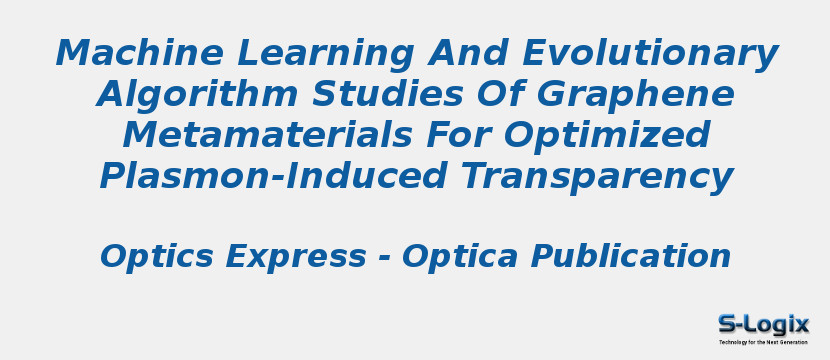Research Area: Machine Learning
Machine learning and optimization algorithms have been widely applied in the design and optimization for photonics devices. We briefly review recent progress of this field of research and show data-driven applications, including spectrum prediction, inverse design and performance optimization, for novel graphene metamaterials (GMs). The structure of the GMs is well-designed to achieve the wideband plasmon induced transparency (PIT) effect, which can be theoretically demonstrated by using the transfer matrix method. Some traditional machine learning algorithms, including k nearest neighbour, decision tree, random forest and artificial neural networks, are utilized to equivalently substitute the numerical simulation in the forward spectrum prediction and complete the inverse design for the GMs. The calculated results demonstrate that all algorithms are effective and the random forest has advantages in terms of accuracy and training speed. Moreover, evolutionary algorithms, including single-objective (genetic algorithm) and multi-objective optimization (NSGA-II), are used to achieve the steep transmission characteristics of PIT effect by synthetically taking many different performance metrics into consideration. The maximum difference between the transmission peaks and dips in the optimized transmission spectrum reaches 0.97. In comparison to previous works, we provide a guidance for intelligent design of photonics devices based on machine learning and evolutionary algorithms and a reference for the selection of machine learning algorithms for simple inverse design problems.
Keywords:
Author(s) Name: Tian Zhang, Qi Liu, Yihang Dan, Shuai Yu, Xu Han, Jian Dai, and Kun Xu
Journal name: Optics Express
Conferrence name:
Publisher name: Optica Publishing Group
DOI: https://doi.org/10.1364/OE.389231
Volume Information: Vol. 28, Issue 13, pp. 18899-18916
